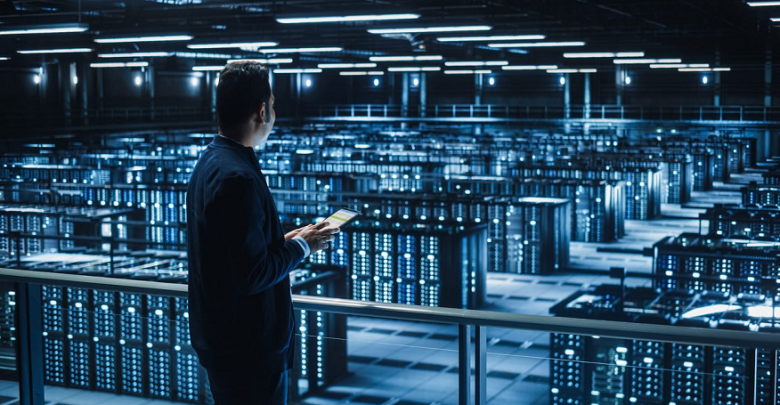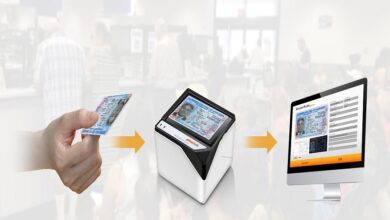Understanding the Different Types of Data Centers: A Comprehensive Guide

Data centers centralize a business’s network infrastructure in secure facilities. They are crucial to ensuring businesses can access the information they need to operate efficiently.
Data center hardware includes computers to process applications and storage devices for processing data. It also has servers, networking equipment, and cabling. Businesses can manage data centers or let third-party providers handle the deployment, management, and monitoring.
Hybrid
A data center is any facility that houses centralized computer and telecommunications infrastructure to build and run applications and store and manage the associated data. They can be owned and operated by businesses in an on-premises model or, more commonly, by third parties who host them as part of a colocation or cloud service.
Modern data centers include servers that run computing and application software, storage (standalone devices or converged with the servers), and networking equipment to connect them to other systems. They also need a unique environment, including raised floors, cable trays, cooling mechanisms, and access control. This is why they’re often in individual buildings with dedicated security and monitoring services.
The amount of heat generated by all that IT infrastructure can be a significant issue, so these facilities require extensive air- and liquid-based cooling systems. They can cost millions of dollars to build. They also need particular power subsystems, uninterruptible power supplies, backup generators, ventilation, and fire suppression systems.
When constructing these facilities, business, and IT teams must consider the types of workloads they want to retain on-premises, which can impact performance and storage requirements. They must also understand how to migrate workloads between these different environments, ideally with a schedule that minimizes outages. They can choose from a variety of data center storage configurations, including direct-attached storage (DAS), network-attached storage (NAS), and storage area network (SAN). Most types of data centers require specialized security solutions, including advanced threat intelligence, tailored content, code and image analysis, and deep visibility into the ecosystem.
On-Premises
A traditional data center is a server room an organization builds and maintains on its property. It contains the servers, cabling, and networking equipment to store, process and communicate digital information. On-premises data centers are a good fit for mission-critical applications, which must have maximum uptime and require the highest levels of privacy and security. They also are appropriate for applications that cannot be moved to the cloud due to a lack of compliance or regulatory requirements.
The physical components of a data center include computing hardware like routers and servers, network equipment including switches and firewalls, a security system, storage systems, and management systems such as software and applications. It also provides power management equipment like Uninterruptible Power Supplies (UPS) and diesel generators. To keep up with the demands of constant use, a data center must be able to deliver clean, reliable power. It must also be able to draw heat away from the servers, so it can be cooled using a combination of direct air conditioning, indirect evaporative cooling, and water cooling.
A typical data center can look like something out of a sci-fi movie with rows of servers, towers of cooling, and endless wires. To ensure a data center runs at peak performance, it often includes an intelligent control system that optimizes cooling, climate controls, and more automatically to improve uptime and efficiency.
Off-Premises
Data centers are central to the operations of many businesses. They provide the computing power to run applications, the storage capabilities to process data, and the networking infrastructure that connects employees with critical business systems.
Traditionally, on-premises data centers are built and maintained on company property. This model gives companies control over information security and enables them to comply with regulations like GDPR or HIPAA. However, building and operating an on-premises data center can be expensive. It also requires dedicated in-house IT teams to oversee IT deployments, hardware upgrades, and network monitoring. This can detract from the time spent on initiatives that drive growth and innovation.
A colocation data center provider can offer cost-effective alternatives to on-premises solutions. By hosting your data centers in a service provider’s facility, you can free up your IT team to focus on projects that will grow your business.
A few colocation data centers, including carrier hotels, are dense fiber hubs designed to accommodate many more telecom and data providers than a typical colo. Other options include modular data centers arranged in shipping containers that can be deployed in a location and scaled up as capacity requirements change. Finally, edge data centers can be located on the network’s edge and process local IoT and machine-to-machine data.
Cloud
Data centers support nearly all enterprises’ computing, storage, and network applications. Their physical location is a secure facility with proper security access controls and enough square footage to accommodate the data center’s infrastructure and equipment, including servers, networking hardware like routers and firewalls, cabling, and power management equipment such as uninterruptible power supplies (UPS).
The server component of a data center houses the existing computer systems that provide processing power for enterprise application workloads. The system may be a high-performance mainframe computer, rack-mount, blade server, or virtual machine. Most plans include local storage capability as a direct-attached storage device or a storage area network. These devices enable the most frequently accessed data to remain close to the CPU for performance reasons.
Storage is an integral part of any modern data center and can be a combination of tape drives, disk drives, or solid-state drives with backups. Networking includes switches, routers, and firewalls that connect data centers and the outside world. Security is critical and includes firewalls, VPNs, and data encryption, while management systems include software and applications to run the data center and monitor its operations.




